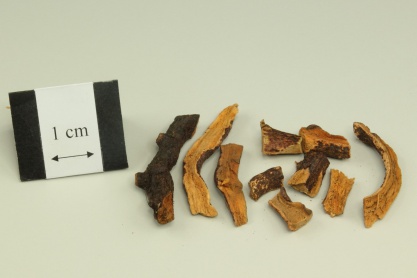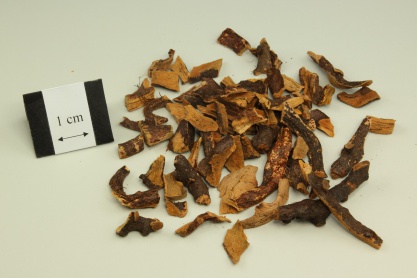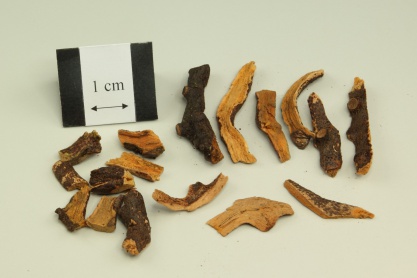骨碎補
- ENG
- Fortune's Drynaria Rhizome
- LATIN
- Drynariae Rhizoma
| Medicinal Group | Blood-activating trauma-curing medicinal |
|---|---|
| Source | Dried rhizome of Drynaria fortunei (Kunze) J.Sm. (Fam. Polypodiaceae) |
| Nature and Flavors | bitter; warm |
| Meridian Affinity | Liver, Kidney |
| Actions | To replenish the kidney, strenghten the bones, promote the healing of fracture, and relieve pain |
Family
Polypodiaceae
Part used
Root and Rhizome
Indications
Deficiency syndrome of the kidney marked by back pain, tinnitus, impairment of hearing and looseness of teeth; traumatic injuries, bone fracture; external use for alopecia areata, vitiligo
Research Findings
- Bushen Qiangdu Recipe (consisting rhizoma drynariae) could regulate the bone metabolic level in patients, attenuate the immune inflammatory response, improve the spine and joint activities functions, increase bone formation, reduce bone resorption, thereby, enhancing the bone mineral density, showing significant therapeutic effect on osteoporosis in ankylosing spondylitis patients.[1]
Cautions
No Data.
Report on adverse effect
No Data.
Reference
Reference
- Wang H, Yan XP, Kong WP. (2011). Effect of bushen qiangdu recipe on osteoporosis and bone loss of patients with ankylosing spondylitis. Zhongguo Zhong Xi Yi Jie He Za Zhi. , 31(4):471-5.












